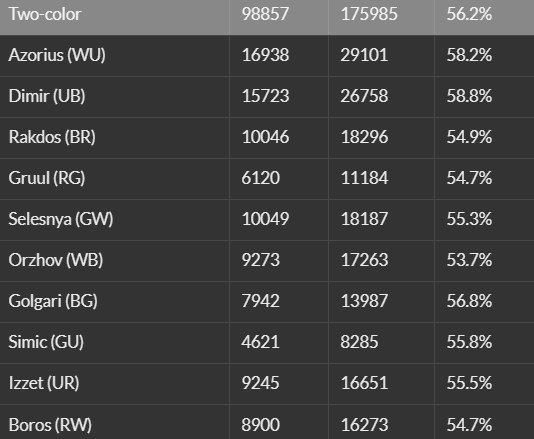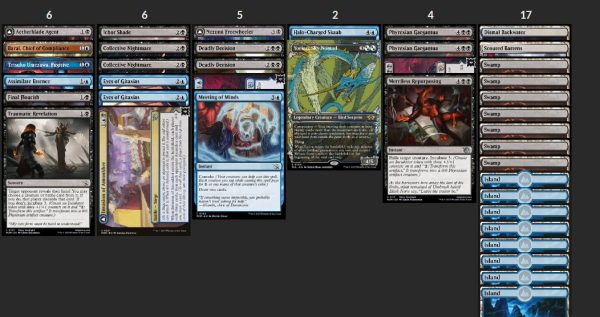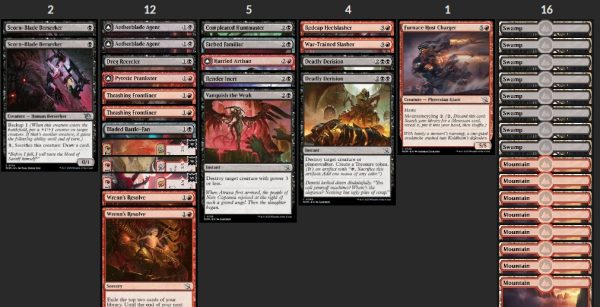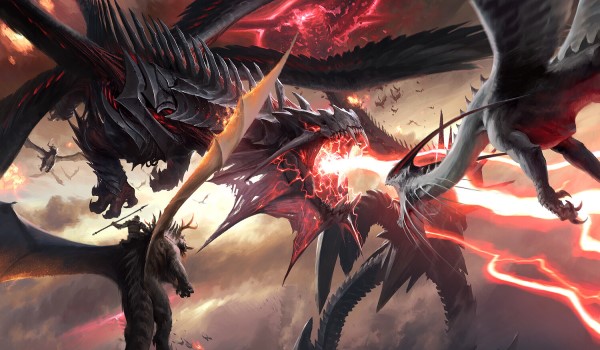Are you a Quiet Speculation member?
If not, now is a perfect time to join up! Our powerful tools, breaking-news analysis, and exclusive Discord channel will make sure you stay up to date and ahead of the curve.
Sometimes the secret of a Draft format glimmers in the smallest details.
Consider the combat trick Arachnoid Adaptation. Combat tricks are typically optimized during attacks. We want to use them when our opponent's mana is down to avoid being blown out by instant-speed interaction.
The granted keyword reach, however, does nothing for attacks. Had it been trample or menace, it would clearly lean towards being an aggressive card. First strike and deathtouch are abilities that are good on either side of combat. Yet March of the Machine's (MOM) best-performing combat trick is designed as a defensive card.

In our preview article, we discussed the expected impact of battles. It was hard to overlook a new card type being introduced to the game. These cards suggest a snowballing format, where aggression leverages into board advantage. However, the format's emergency brake for this specific issue has defined game play. This best interaction in this format are defensive cards, or "blocking" spells.
Block party
These cards are designed to play defense. They are designed to protect battles. They've stymied aggression early in the format. The convoke instants accentuate this aspect of gameplay, as creatures hanging back to block can tap to cast them. Stoke the Flames, for example, plays well on offense or defense. While this card has a pedigree of being extremely aggressive, especially in constructed, it might be better on defense in MOM Limited. When our creatures attack, they can't convoke. When they're back on defense, they pull double-duty, as mana sources and as red zone participants.
All of these effects advantage the defender. The result is clear. Flipping battles is more difficult than we may have expected.
Are Battles a Bust?
Battles still have a place, but the aggressive decks struggle to optimize them. RG, the archetype designed to utilize battles, has struggled mightily. It's tied for the second-worst-performing deck, and its struggles are at the heart of what it's fundamentally trying to do.

Because of the potency of the defensive cards, it's hard for two-drops to earn their place. While Thrashing Frontliner, War-Trained Slasher, and War Historian look like potent attackers relative to the offerings of earlier expansions, they don't match up well with the format's interaction. And when they get hit, they don't leave behind any value.
RG wants to apply pressure, specifically to battles. However, the battles don't support that pressure, at least not on the front side. The differing goals of aggro creatures and value battles greatly dilute the deck's plans and cripple the archetype.
No pressure
So many of the RG battles don't help the central gameplan. By flipping these cards, pilots get an additional attacker, oftentimes one with impressive stats. However, if we're going to play this slower, grindier strategy, we need to win on the first surge, and then win again when it comes to actually finishing off our opponents. It's simply more work than ignoring battles and winning once, when it counts.
Invasion of Muraganda // Primordial Plasm actually does support the RG game plan. It's a combat trick that leaves behind a counter, and we can leverage those abilities to flip a battle the turn we play it. Of all the tools RG has, this is the one of the most important non-rares to the archetype's stated goals.
Battles Are Game Pieces, Not Side Quests
RG wants to pressure battles, but unfortunately, the battles don't really help the deck do so. Conversely, UB wants to grind out games with card advantage, something the Siege battles happen to be great for.

UB Battles 7-2
The battles here have a specific purpose. Our deck wants to grind out our opponents, and these effects all contribute to that gameplan. In the above deck, Yorion, Sky Nomad flickering my battles coerced more concessions than I ever could predict. Invasion of Vryn // Overloaded Mage-Ring is good because, in this archetype, Sift would be good.
While this deck got absurd advantage from the legendary rare, UB has a number of reasonable attackers that can pressure battles. Preening Champion, Aetherblade Agent, and Order of the Alabaster Host all do a good job pressuring battles. Furthermore, this deck doesn't need these battles defeated immediately. When RG leaves a battle on the field, it becomes harder for them to flip it later on. As RG falls behind in the resource war, their attacks get weaker. As UB begins to snowball value, our attacks grow stronger.
Being Aggressive With Battles
When it comes to successfully flipping battles, RG decks should consider some unconventional options like Kitesail to pair with the better commons like Chomping Kavu and Volcanic Spite. We also want to make sure that we're playing an appropriate number of battles. In personal experience, an excess of four battles has caused decks to feel bloated and clunky. More importantly, however, are the battles we choose to play. Because so few of RG's battles impact the board in a synergistic way, we should prioritize the cheap ones. While Invasion of Mercadia // Kyren Flamewright doesn't exactly pressure an opponent, playing it with a second spell to set up an attack that turn can lead to an easy flip.

These numbers are impressive for an archetype that wins below 55% of the time. Invasion of Zendikar // Awakened Skyclave is just a very strong card in the format, allowing us to actually get ahead of our opponents, which this strategy struggles to do. With more mana, we access our splash cards and can cast more powerful creatures, allowing us to defeat more battles and eventually create an insurmountable advantage.
Unfortunately, we can't really build around a highly-sought-after uncommon. There is a scarcity of on-plan battles, and all of them are at uncommon or rare. It's difficult to capitalize on an archetype when it faces that type of obstacle, a fact that contributes to RG's lacking numbers.
Choosing Wisely
Aggressive decks can still capitalize on battles, but because of their scarcity, we need to get a little more creative. This RB Battle deck performed well for a couple of reasons. What do you notice about its battles?

RB Battles 5-3
This deck's battles are all cheap and on-plan. They help us play a low-to-the-ground, aggressive strategy. Two of them are removal spells that flip; the other one is a Tormenting Voice. All three are great at ending the game once flipped.
The two-drops are supported to help pressure battles and we had solid removal. And Render Inert was surprisingly strong. Killing a big incubate token gives it utility when we have no battle in play. Unfortunately, it is devastatingly easy to accidentally select zero counters. Still bitter about that one.
However, this build also had some weaknesses. Dreg Recycler and Compleated Huntmaster are filler without more support. Wrenn's Resolve sometimes felt a little too small-ball, but was generally fine. In short, it could have used some power. A Stoke the Flames, Volcanic Spite or Fearless Skald might have pushed me into 7 wins.
Key Questions
Battles are exciting. They promise a tantalizing upside. Value and a creature? Sign me up! But Magic is not played in a vacuum. Value is only valuable when it can be leveraged to win the game. A creature is only an asset if we can get it onto the field. Otherwise, these cards are just that: cardboard.
When we draft battles, we need to ask ourselves:
- Is the frontside on-plan?
- Do we have a reliable means of flipping this battle at a point in the game when it is still relevant?
- How powerful is flipping this card?
Ultimately, these all culminate into one single decision point: will this card be a meaningful game piece for us to win this game? Or is it a clunky side quest, in which the juice will rarely earn the squeeze? If we're going to commit to a battle, we need to make sure that we have a battle worth fighting for.
A Battle Worth Fighting
Battles can certainly offer a lot of power and some very interesting gameplay, but we need to make sure we're able to get the most out of them. Often, maximizing their worth will mean overcoming the setbacks the format's defensive spells can create.




